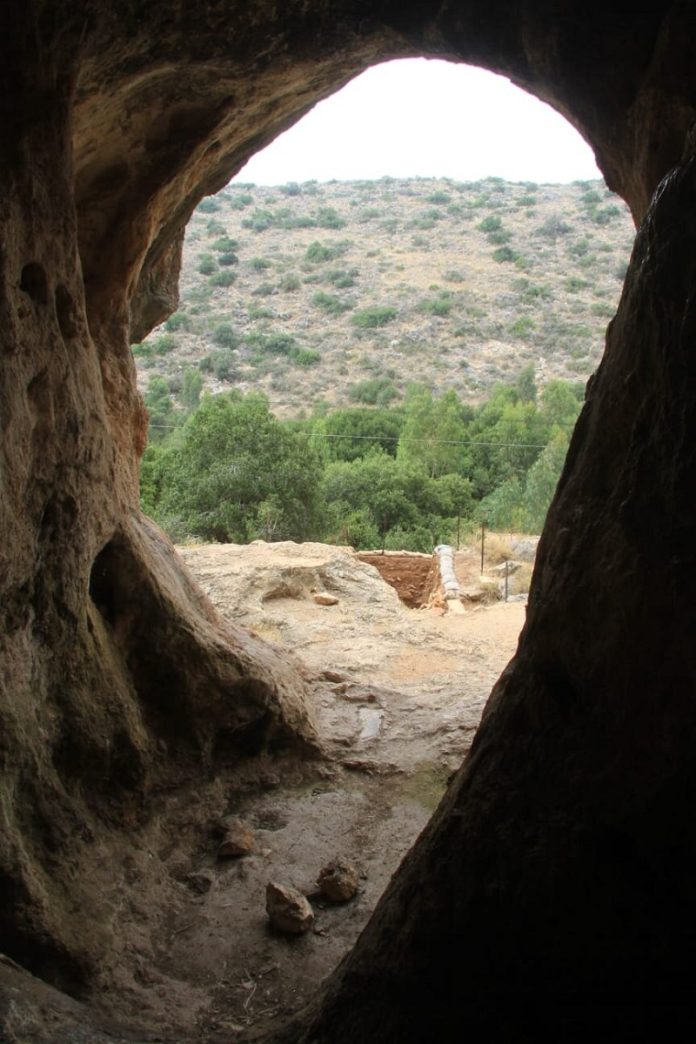
For many years, scientists believed that Homo sapiens and Neanderthals were two separate human groups that only met and interbred much later in history.
But new research from Tel Aviv University and the French National Center for Scientific Research has revealed that these two groups were already mixing socially and biologically as far back as 140,000 years ago in the Land of Israel.
The discovery is based on the skeleton of a five-year-old child found in the 1930s in Skhul Cave, on Mount Carmel.
While the fossil was unearthed decades ago, only recent technological advances allowed scientists to re-examine it in detail.
What they found was groundbreaking: the child’s skull combines traits from both Homo sapiens and Neanderthals, making it the earliest known fossil in the world to show evidence of interbreeding between the two groups.
Genetic studies over the past decade had already shown that Neanderthals and Homo sapiens shared genes between 60,000 and 40,000 years ago. Today, 2% to 6% of our DNA still comes from Neanderthals.
However, the Skhul child is far older than these known interactions. The skull shape resembles that of early Homo sapiens, particularly in the rounded curve of the head, but its jaw, inner ear, and even the blood vessel system inside the skull are typical of Neanderthals.
Professor Israel Hershkovitz of Tel Aviv University, one of the lead researchers, explained that the finding changes how we understand Neanderthals’ presence in the region.
For a long time, Neanderthals were thought to have evolved in Europe and only reached the Middle East about 70,000 years ago.
But studies over the past few years suggest they were already living in Israel 400,000 years ago. One group, nicknamed the “Nesher Ramla Homo,” lived in the region and likely encountered Homo sapiens groups migrating out of Africa around 200,000 years ago.
According to this new study, the two populations interbred much earlier than previously thought.
The Skhul child provides the first physical proof of those early encounters. Over time, the local Neanderthal populations were absorbed into Homo sapiens groups, much like the later European Neanderthals who disappeared about 40,000 years ago.
To confirm their findings, the researchers used advanced imaging tools. At Tel Aviv University’s Shmunis Family Anthropology Institute, they scanned the skull and jaw with micro-CT technology to create precise 3D models.
This allowed them to study both visible and hidden anatomical structures, including the inner ear and the brain’s blood vessel system. The analysis showed clear evidence of mixed features.
Until now, the oldest fossil showing mixed traits came from Portugal, where the so-called “Lapedo Valley Child” was discovered in 1998. That skeleton was only 28,000 years old, making the Skhul child more than 100,000 years older.
Traditionally, fossils from Skhul Cave and nearby Qafzeh Cave were thought to represent some of the earliest Homo sapiens outside Africa. This new study suggests that at least some of those fossils actually reflect a long process of genetic blending with Neanderthals who had been living in the region for hundreds of thousands of years.
As Prof. Hershkovitz explains, the fossil provides the earliest direct evidence of social and biological connections between Neanderthals and Homo sapiens.
It shows that from the very beginning of their coexistence, these groups were not only meeting but also forming close relationships that shaped the course of human evolution.



